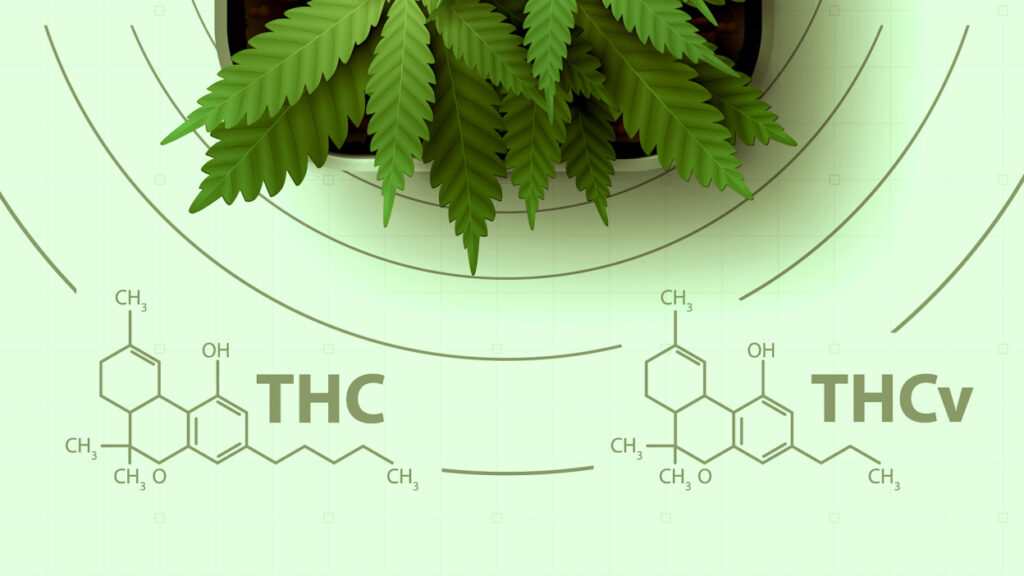Introduction
In the ever-evolving landscape of cannabis research and exploration, the identification of different cannabinoids has opened a fascinating realm of possibilities. Two such compounds that have recently gained attention are Delta-10 THC (tetrahydrocannabinol) and THCV (tetrahydrocannabivarin). While both belong to the cannabinoid family and share a common origin in the cannabis plant, they exhibit distinct chemical structures and physiological effects. In this comprehensive guide, we will unravel the intricate differences between Delta-10 and THCV, shedding light on their unique properties, potential therapeutic applications, and the implications for cannabis enthusiasts and the medical community.
Delta-10 THC: The Emerging Player in the THC Spectrum
Delta-10 THC is a relatively novel cannabinoid that has entered the cannabis scene, adding complexity to the spectrum of THC compounds. Unlike its more well-known counterparts, Delta-9 THC and Delta-8 THC, Delta-10 is found in trace amounts in the cannabis plant. Its discovery and isolation have sparked interest due to its unique psychoactive properties.
The chemical structure of Delta-10 THC is similar to Delta-9 THC, with a double bond in its molecular chain. This slight variation in structure contributes to differences in how it interacts with the endocannabinoid system, resulting in distinctive effects. Delta-10 is reported to have a more energizing and uplifting impact, often described as a hybrid of Delta-9 THC’s euphoria and the clear-headedness associated with Delta-8 THC. However, it’s important to note that research on Delta-10 is still in its early stages, and its effects can vary among individuals.
As Delta-10 gains popularity, it has found its way into various cannabis products, including vape cartridges, edibles, and tinctures. The consumer experience with Delta-10 is subjective, and its effects may differ from person to person. Research is ongoing to explore its potential therapeutic applications, but as of now, Delta-10 remains largely appreciated for its unique psychoactive profile.
THCV: The Varied Potential of the Cannabinoid Spectrum
THCV, or tetrahydrocannabivarin, is another cannabinoid that has piqued the interest of researchers and cannabis enthusiasts alike. It is a naturally occurring compound in cannabis, but its concentration in different strains can vary significantly. THCV shares a common precursor with other cannabinoids, but its unique structure results in distinct physiological effects.
One of the notable differences between THCV and other cannabinoids is its potential to act as an antagonist at CB1 receptors in the endocannabinoid system. Unlike THC, which is a CB1 receptor agonist, THCV may counteract some of the effects of THC by binding to these receptors in a different manner. This has led to exploration of THCV’s potential as an appetite suppressant, making it a subject of interest in weight management and metabolic research.
Moreover, THCV is known for its biphasic effects, meaning its impact on the body can vary depending on the dosage. In lower doses, THCV may act as an appetite suppressant and provide an energetic, clear-headed experience. However, in higher doses, it may behave more like a traditional THC compound, leading to euphoria and relaxation.
Research into THCV’s potential therapeutic applications is expanding, with studies exploring its role in conditions such as diabetes, obesity, and neurodegenerative disorders. Additionally, its potential anti-inflammatory and neuroprotective properties have garnered attention, opening avenues for further investigation.
Chemical Structures: Unraveling the Molecular Variations
To understand the differences between Delta-10 and THCV, it’s crucial to delve into their chemical structures. Delta-10 THC, like its more common counterparts Delta-9 THC and Delta-8 THC, has a molecular structure with a double bond in its carbon chain. This double bond is a key feature that influences the compound’s psychoactive properties by interacting with the CB1 receptors in the endocannabinoid system.
On the other hand, THCV has a distinct structure that sets it apart from other cannabinoids. It is a propyl cannabinoid, meaning it has a three-carbon side chain, as opposed to the five-carbon side chain found in THC. This subtle difference in structure contributes to the unique effects and pharmacological profile of THCV.
The chemical variances in Delta-10 and THCV underscore the complexity of the cannabinoid family and highlight how subtle alterations in molecular structures can lead to diverse physiological outcomes. Researchers are actively exploring these structural nuances to decipher the specific mechanisms by which these cannabinoids interact with the endocannabinoid system.
Potential Therapeutic Applications: From Weight Management to Neuroprotection
Both Delta-10 and THCV are subjects of ongoing research, with scientists exploring their potential therapeutic applications across various medical domains.
Delta-10 THC
While research on Delta-10 is in its infancy, there is growing interest in its potential therapeutic applications. Some of the areas being explored include:
- Anti-Anxiety Properties: Initial anecdotal reports suggest that Delta-10 may have anti-anxiety effects without the sedative qualities associated with some other cannabinoids.
- Pain Management: As with other cannabinoids, Delta-10 may have potential applications in pain management, although more research is needed to establish its efficacy and safety in this regard.
- Elevated Mood: Users have reported experiencing an uplifted mood and increased energy levels with Delta-10, making it a subject of interest for those seeking an alternative to traditional THC experiences.
THCV
THCV’s potential therapeutic applications are diverse and expanding, with research focusing on the following areas:
- Appetite Suppression: The potential of THCV to act as an appetite suppressant is being explored for its implications in weight management and metabolic health.
- Diabetes and Metabolic Disorders: Research suggests that THCV may have antidiabetic effects, making it a subject of interest in studies exploring its role in diabetes and metabolic disorders.
- Neuroprotection: Some studies have investigated THCV’s neuroprotective properties, suggesting a potential role in conditions such as Parkinson’s disease and other neurodegenerative disorders.
- Bone Health: There is early research indicating that THCV may have a role in promoting bone health and potentially aiding in conditions like osteoporosis.
- Anti-Inflammatory Effects: THCV’s potential anti-inflammatory properties are being explored for their applications in conditions characterized by chronic inflammation.
Legality and Accessibility: Navigating the Regulatory Landscape
As with many cannabinoids, the legality and accessibility of Delta-10 and THCV can vary based on regional regulations. Delta-10, being a derivative of THC, is subject to the same legal considerations as Delta-9 THC. In regions where cannabis is legal, products containing Delta-10 may be available, but it’s essential to adhere to local laws and regulations.
THCV, like other cannabinoids, is subject to regulations that can differ across jurisdictions. Some strains of cannabis naturally produce higher levels of THCV, while specific THCV-dominant products may be developed for medical or recreational purposes where legal.
Navigating the regulatory landscape is crucial for consumers and producers alike. It’s advisable to stay informed about local laws and regulations to ensure compliance and responsible use of products containing Delta-10 or THCV.
Conclusion: Navigating the Cannabinoid Tapestry
In the intricate tapestry of cannabinoids, Delta-10 and THCV emerge as distinct threads, each weaving its unique pattern of effects and potential therapeutic applications. While Delta-10 introduces a new dimension to the THC spectrum with its energizing properties, THCV stands out for its potential role in appetite suppression, metabolic health, and diverse medical applications.
As research advances, our understanding of these cannabinoids will deepen, unlocking new possibilities for medical interventions and expanding the repertoire of options for cannabis enthusiasts. It’s essential to approach the consumption of Delta-10 and THCV with awareness, considering individual responses and adhering to legal and regulatory frameworks.
Whether one seeks the euphoric embrace of Delta-10 or explores the potential metabolic benefits of THCV, these cannabinoids contribute to the rich and evolving narrative of cannabis science. As this journey continues, scientists, healthcare professionals, and enthusiasts alike will collectively unravel the complexities of the cannabis plant, fostering a nuanced and informed approach to its therapeutic and recreational potentials.

